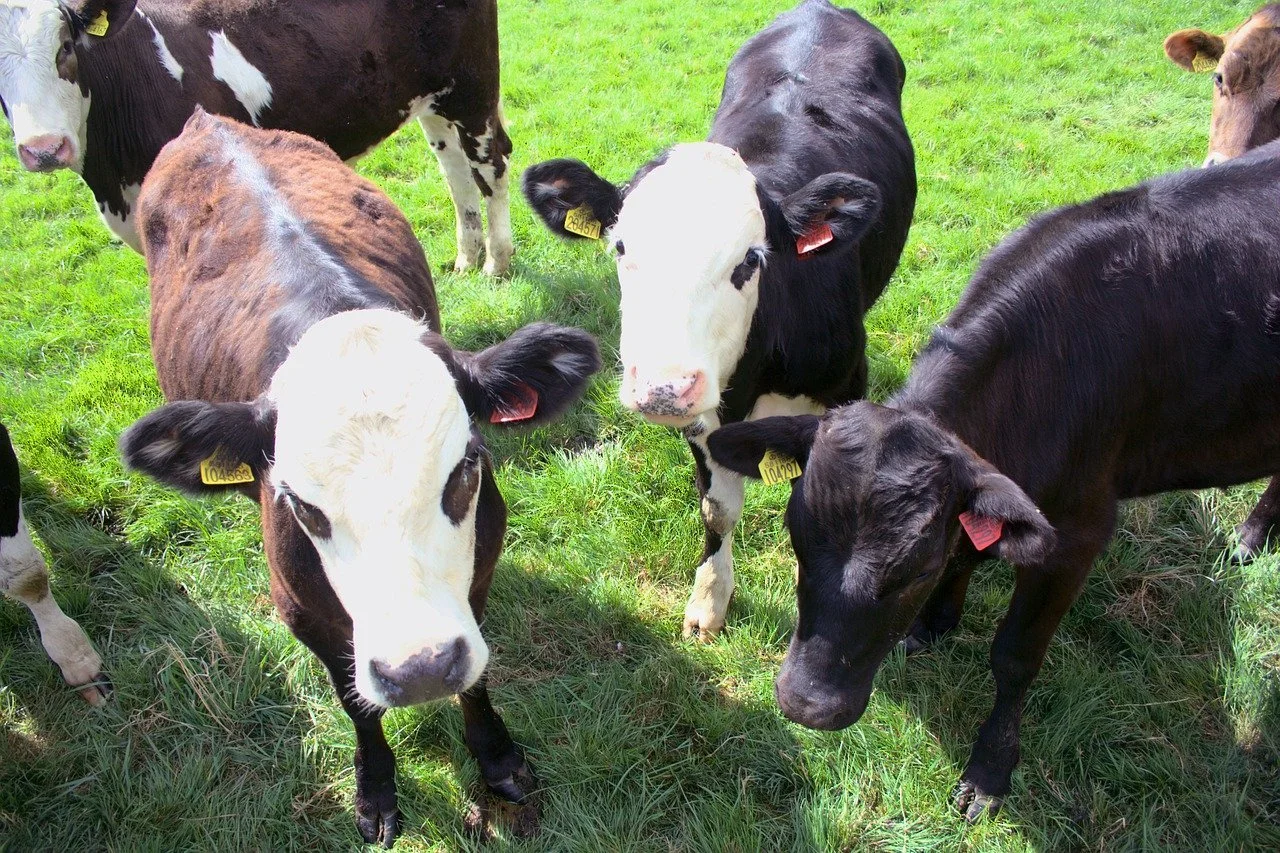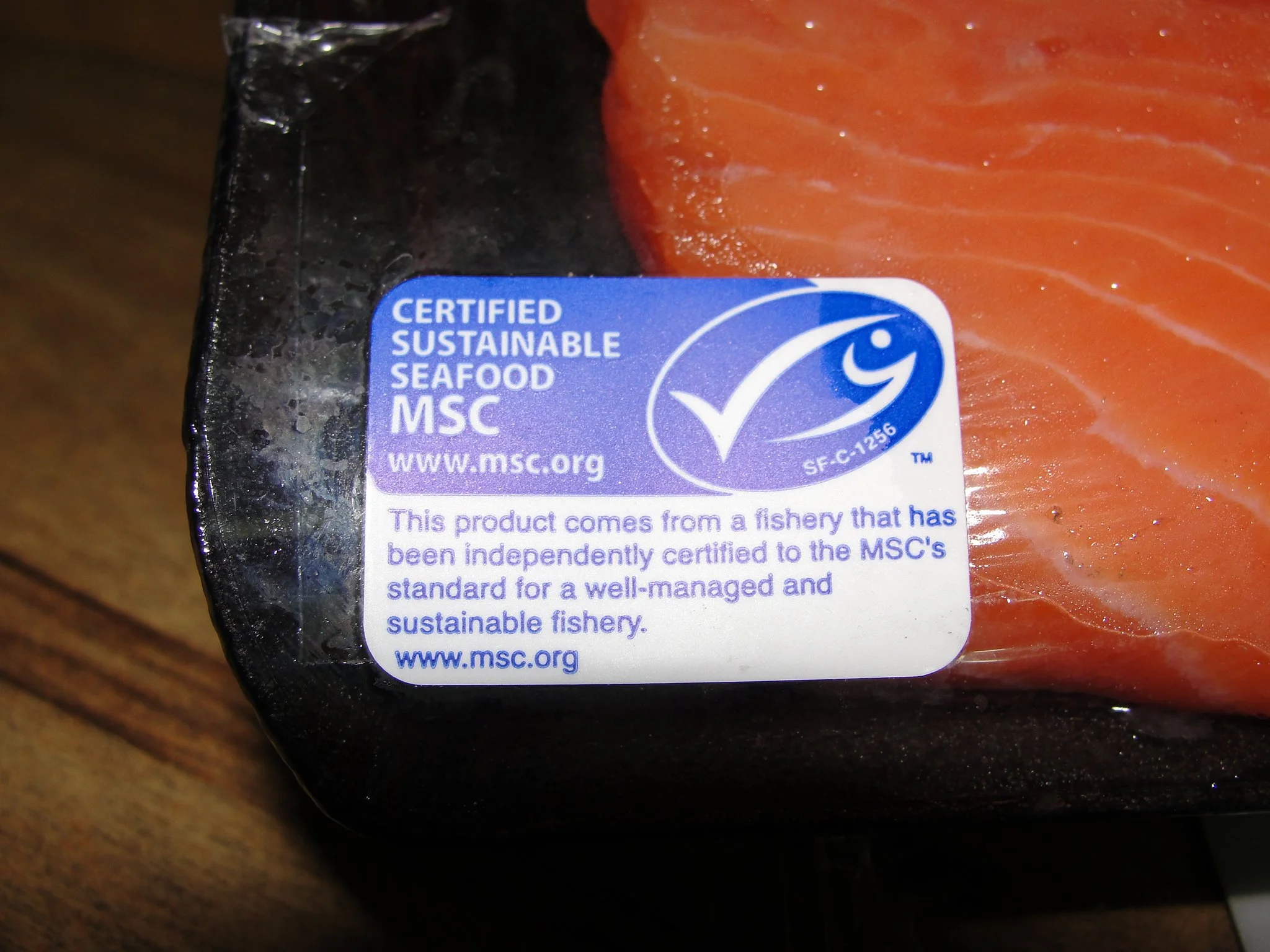The Power of Sustainable Seafood for the Future
By Lindsey Neuwirth, Safina Center Intern
Raising cows for meat produces a huge amount of greenhouse gas pollution. Photo via Pixabay Henry_Bell
In 2021, 821.6 million people across the globe were starving or undernourished. While it is already a struggle to feed the global population, the Food and Agriculture Organization estimates that food production must increase 60 percent by 2050 to meet the demand of this projected population increase. To achieve this type of production it is crucial to develop a sustainable plan. Today, the food production industry makes up over 35 percent of all greenhouse gas emissions with 57 percent coming from livestock production alone. To meet the needs of an increasing population and decrease world hunger and malnutrition, the food production industry must create a sustainable plan of action.
One practical solution to this is sustainable seafood. Currently, fish make up 17 percent of total animal protein consumed globally. Rich in essential fatty acids and proteins needed for development, maternal, and child health, fish offer key nutrients, specifically to communities at risk for malnutrition. In addition, raising fish creates a much lower carbon footprint when compared to other animal proteins. Adding more fish to our diets means less consumption and production of other animal proteins, proteins that create a much higher carbon footprint, contributing to climate change and ultimately harming our planet.
When it comes to food policy and addressing world hunger, seafood is typically ignored in the conversation, especially when considering nutritional value. That is why recent science is encouraging policy makers to recognize fish as a nutritional food source, not just an economic resource. Specific guidance on sustainable fish production and development in this sector is currently lacking. By investing in sustainable seafood production and distribution, we can help both people and the planet.
However, with increased seafood consumption, there comes an increased risk of unsustainable fishing and farming practices. Approximately 85 percent of marine fish stocks are exploited or overfished. This, along with rampant bycatch, the accidental capture of non-targeted species, and pollution from improperly managed seafood farms has created an industry with a multitude of problems.
To fully utilize fish stocks as a solution to food security and malnutrition, we have to combat unsustainable seafood practices. Governments and lawmakers must enact strict policies and regulations and these policies must then be consistently enforced to prevent the exploitation and overfishing of stocks. Currently, the Magnuson Stevens Fishery and Conservation Act governs marine fisheries nationwide to prevent overfishing, rebuild overfished stocks, ensure a sustainable supply of seafood, and protect habitats needed for fish reproduction. Despite this policy being enacted, illegal, unreported and unregulated fishing is still a major problem threatening global fish stocks as fishermen do not abide by the law, do not correctly report their catch, or fish in areas not under current management. Almost 80 percent of seafood in the United States is imported, so not supporting illegal, unreported and unregulated fishing is crucial to ensuring a sustainable seafood market. Under these circumstances, international policy is extremely important. Organizations including the International Commission for the Conservation of Atlantic Tunas, Commission for the Conservation of Antarctic Marine Living Resources and North Pacific Anadromous Fish Commission are beneficial to regulating international fishing, but as much of these organizations are regional or species specific, some fisheries slip through the cracks when it comes to abiding by set policies. To address this, it is necessary to implement increased international fishing policies and more strict national seafood trade regulations.
In the meantime, consumers can do their part too, by not supporting seafoods that are degrading to the environment in the way they are caught and processed. The Monterey Bay Aquarium’s Seafood Watch provides a helpful tool which identifies fish that are sustainably sourced and those that are not. The tool tells you immediately whether a fish is the best choice, a suitable alternative to other unsustainable seafoods, or should be completely avoided. Similarly, consumers can identify a sustainable seafood by looking for the Marine Stewardship Council (MSC) label. The MSC is a nonprofit dedicated to safeguarding fish stocks through the identification of sustainable seafoods. Their Marine Stewardship Council Fisheries Standard assesses whether a fishery is being properly managed and producing sustainable fish stock.
Look for theMarine Stewardship Council (MSC) label when you are buying fish. Photo via Flickr deckhand
Addressing food security in a rapidly growing population that is plagued with environmental concerns is not easy. The fight to combat this issue, while producing a sustainable outcome is possible if done with caution and proper management. As society continues to experience the effects of climate change, we must use our resources wisely and efficiently. Focusing on bolstering sustainable fisheries will not only aid in lessening starvation and malnutrition across the globe, it will also help lower carbon emissions. This will be necessary to combat harmful greenhouse gas emissions from food production as the population increases, requiring a greater, more sustainable food supply.


